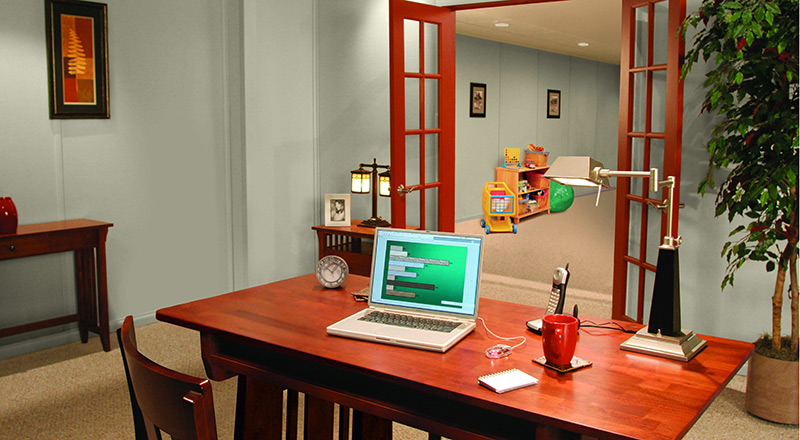Transforming a garage into comfortable living space

I plan to convert our attached garage into a bedroom. What is the most efficient way to insulate the masonry garage walls and convert it?—Monica H.
Converting an existing space in your house into living space is far less expensive per square foot than adding on a room. But since you are not starting from scratch, it does take more planning to make it energy efficient and comfortable in all types of weather.
Before you start, get quotes from some contractors about making the conversion for you. Many companies have predesigned insulated wall and ceiling systems specifically created for this purpose. It may not cost as much as you think compared with buying the individual materials yourself.
Plan to add a window or replace an existing garage window. A block window is best for privacy and security. Some are designed to crank out for natural ventilation and some are made of thick plastic blocks that are lighter than glass and block ultraviolet rays.
Conversion systems with insulated, fabric-covered panels are ideal for a bedroom or home theater where sound is a concern. Those with a snap-in vinyl attachment system are good for moisture resistance; the panels can also be snapped out to access the block or brick walls.
Insulating walls
The easiest way to insulate the walls yourself is to build 2-by-4, studded wall framing on 24-inch centers and insert fiberglass batt insulation. Staple the vapor barrier to the garage studs. Use pressure-treated lumber where it touches the concrete floor. The drawback to this method is the loss of floor space, especially if the garage is small.
To save floor space, an alternative is to attach thinner furring strips to the wall and use rigid foam insulation, which has a higher R-value per inch of thickness. Rigid foam insulation panels are also available, designed to fit over the strips. A caveat: for fire safety, rigid foam insulation must be covered with drywall, not just paneling.
Floor also needs insulation
Don’t neglect the floor when you are insulating the converted garage. Adding carpet may not be enough against a chilly concrete floor that can make the entire room feel cold. Install breathable, resilient panels on top of the concrete before the carpeting.
If the ceiling is low, insulate around the outside of the garage concrete slab. Dig down several feet and place rigid extruded polystyrene insulation panels against the slab sides. Make sure to use extruded, not expanded, foam panels for belowground applications.
James Dulley for the September 2016 issue

